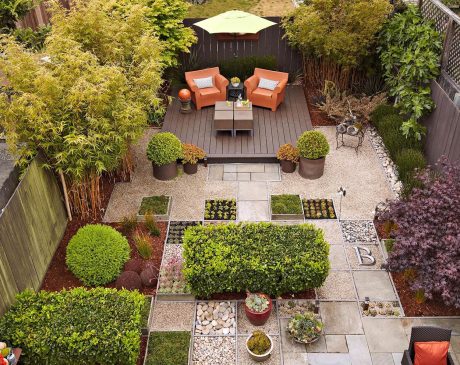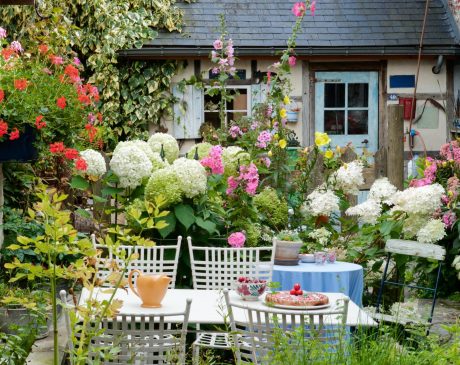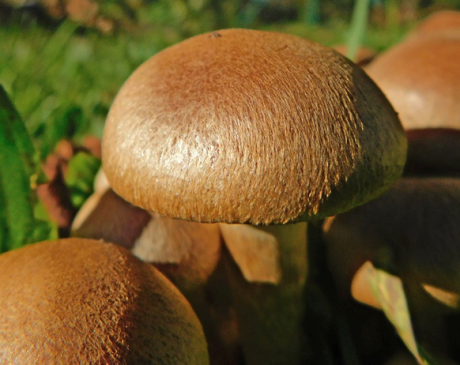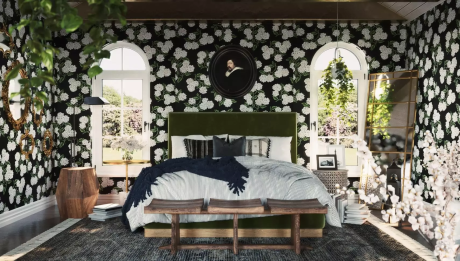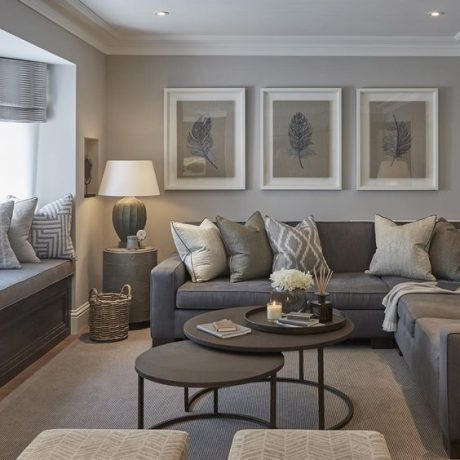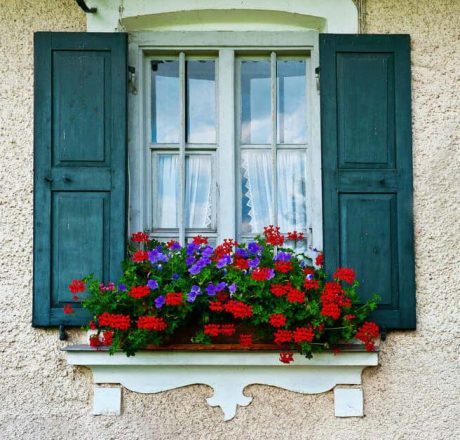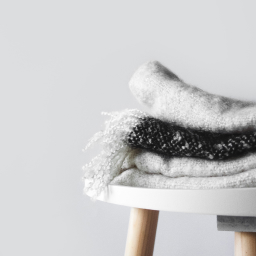Transform Your Yard with16 Captivating Shade Garden Designs
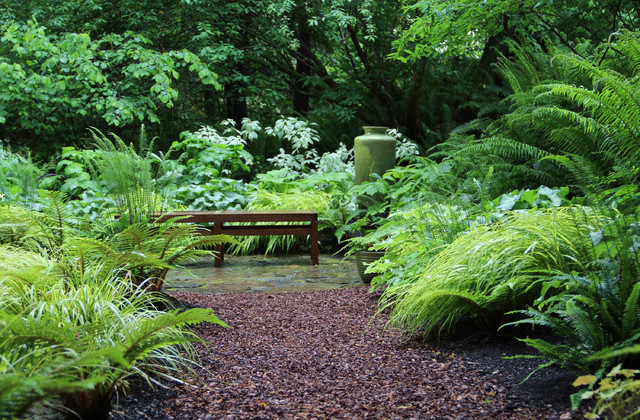
If you are facing a challenge in cultivating a garden due to a deficiency of sunlight in your area, ‘Shade Garden’ is the most feasible option for you.
A shade garden is a kind of garden that does not limit its flourish to the availability of sunlight. It offers an array of possibilities to grow flowers and shrubs, and herbs in the total absence or partial absence of sunlight.
While certain plants can bloom in partial shade, some can grow in dapple or even full shade.
Various ideas to build your shade garden are as follows.
1. Plant Shade-Tolerant Grass
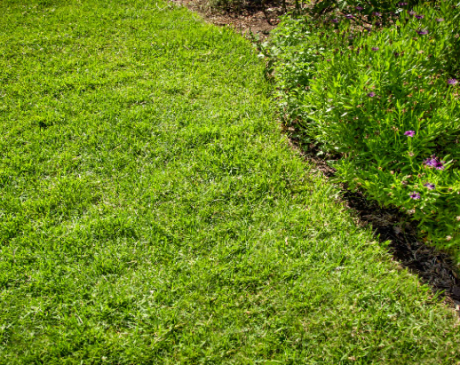
To begin with, for any type of garden, consider the density of its grasses. Since grass requires at least four hours of direct sunlight to nourish itself, plant shade-tolerant grasses that can grow in dappled or partial sunlight. Rye and fine and tall fescues are the cool season shade grass, whereas Zoysia and St. Augustine are preferred for warm season shade grass. You can also use groundcovers such as Ajuga and Heuchera.
2. Artistic Enclave
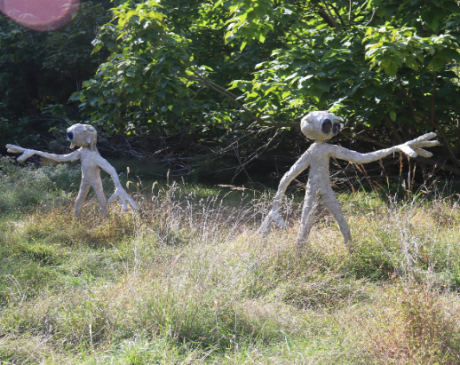
The versatility of art has the ability to draw the eye; the definition of art is up to you. Creating an artistic experience in your shade garden will make you stand out in the gardening enclave. There is no rocket science in creating art for your garden, as it can be used in the form of bottle art, mosaic, paving stones, sculptures, or even fake flowers. Art reflects the personality of the artist; thus, make sure to blend the art with the vibe of your home.
3. Lazy Lawn
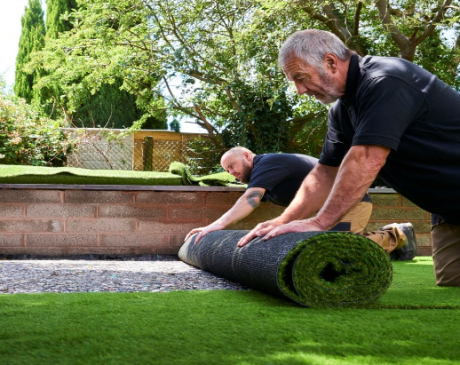
If you are a lazy gardener who hates cleaning and picking up shovels every now and then but is keen on creating an exquisite shade garden, here’s a key set of ‘lazy gardening techniques’ for you- Stop digging and go higher while planting, plant perennial crops that can survive in shades, mulch with edible and beneficial plants and make sure to utilize the whole plant, put the compost in place and watering on autopilot.
To save energy, don’t pull out the roots and let the old plants overwinter. You can also use the stone pavers to plant vivid green Mazus. Mondo grass and autumn ferns can also be used for the shade garden.
4. Color Theme
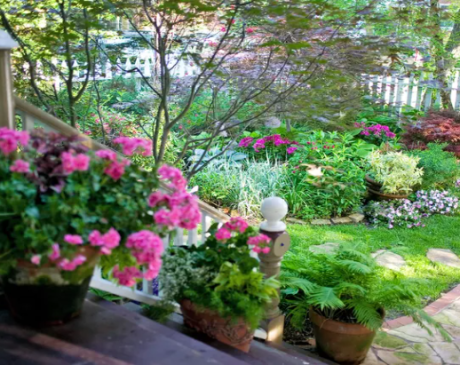
Shade gardens are very choosy with respect to the plants/flowers they allow to bloom in their vicinity, and thus to maximize the color game of the garden, choose one or two hues to give them power over your shade garden. With the wide yet limited range of shade flowers available, create a theme by using the colors that suit the gardener and the landscape of the house. For example, rely on the tones of pink and burgundy from hydrangeas and Japanese maple foliage. You can also use bright and pastel-colored plants.
5. Colorful Foliage
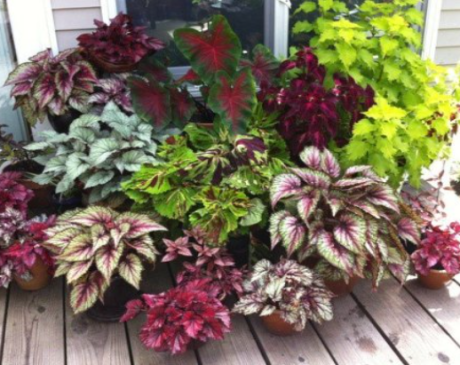
For a person who loves a rainbow more than singular color, colorful foliage is a comfortable shade garden idea. You can choose plants that produce leaves in different colors and remain pretty throughout their lifetime. If colors excite you, foliage with a variety of colors is an advantage for you as plants with colorful leaves retain their color for a long period. Plants like Allium ‘Purple Sensation,’ Huechera, Spirea water, Sarcococca, and Cotinus ‘Royal Purple’ can be used.
6. Edging Plants
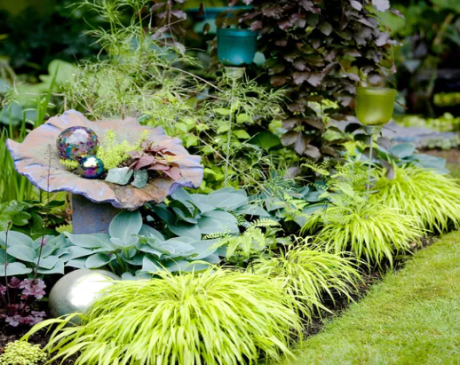
‘Less is more.’ It is not necessary to plant a lot of succulents to make your shade garden beautiful. The focus should be on adding eye-catching elements, and you can plant bold shrubs at the edge of the borders and beds like the Japanese forest grass.
Edging creates crisp lines between beds and other areas and beautifully outlines the focal points. You can also add interesting plants and materials at the edge of the rustic architectural elements that reflect your personality along the shade garden.
7. Texture
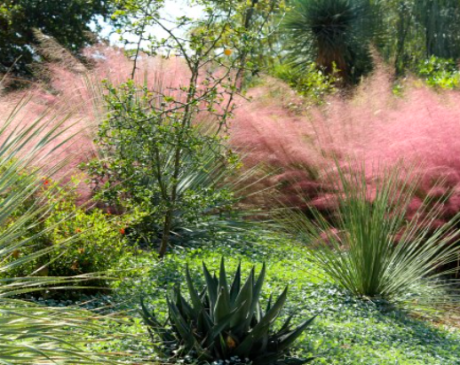
Befriend textures to outstand your shade garden, and it will give you the best results. Even without the use of flowers, your shade garden will happily nourish with the bold look of different foliage and colors.
The dramatic combinations of a variety of textured foliage will add statements with minimal detailing. Create different textures by pairing leaves with opposite characteristics. A single bold textured foliage can be used as a focal point which requires less sunlight.
8. Hard Landscape
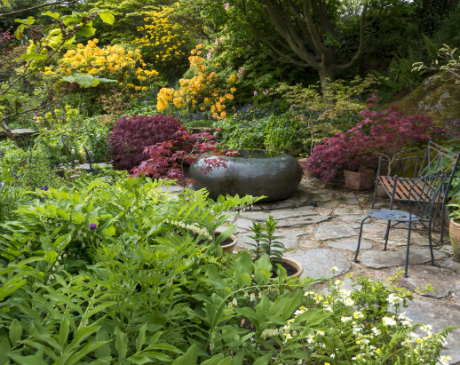
Instead of focusing on plants and flowers, you can turn visitors’ eyes towards the hard landscaping of your shade garden by installing different and unique elements. Create pathways or raised layers with the help of various elements and plant your succulents around them.
For example, mulch the pathway with dark wood chips and surround it with ornamental grasses and golden ground covers. You can also install a porch or a basic sitting area to sit and sip tea with friends. You can plant lettuce around the hard landscape as it prefers less sunlight.
9. Plant in Large Numbers
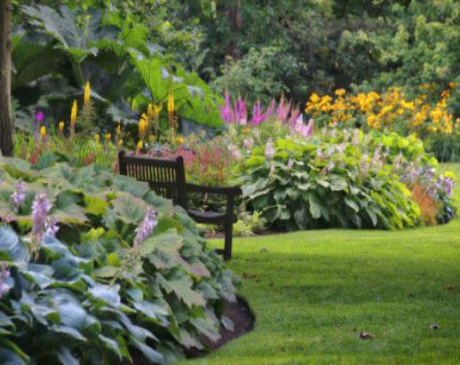
Do not complicate your head and garden with loads of clutter; rather, use a few resources in large numbers to attain perfection. Plant the same or similar flowers, shrubs, herbs, or vegetables in large numbers extending their vicinity to the overall yard.
Plants in a bush look better than plants alone, and thus, creating bunches of similar plants will elevate your shade garden. Pick out your favorite selective shade plants and map them all over the garden.
10. Focus on Shapes
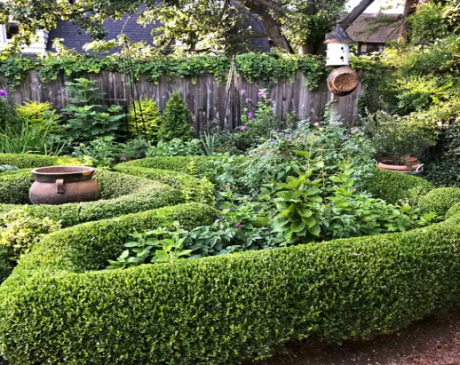
Reach beyond the general idea of using colors and textures to beautify the shade garden. Pay attention to the shapes of the plants and bushes to make your shade garden a showpiece of the mastermind. Use the pitching, pruning, and notching technique to carve out beautiful shapes of the plants to draw the eyes. Either carve out designs yourself or use shade-friendly shape flowers to change the look of your garden.
11. Lend Cohesion
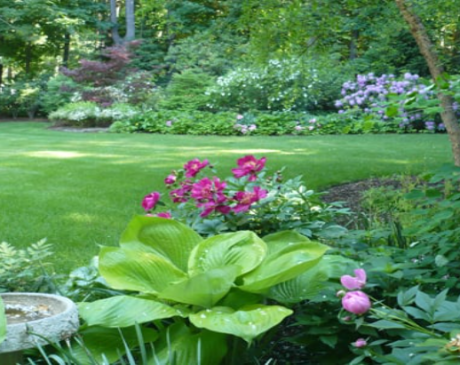
Cohesion is the act of sticking together. Since the yards receive partial to direct sunlight in certain parts and full shade in certain parts, it is necessary to scrutinize the plots and plants according to cohesion. Stick the plants together that require less sunlight with plants that require direct sunlight so that the two will not fight for the resources when it is available. Check the compatibility of plants before lending cohesion.
12. Art of Backlighting
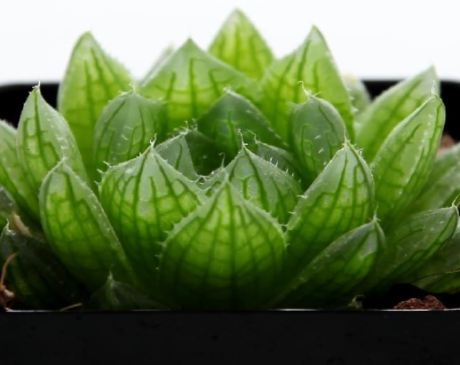
Make use of the sun’s golden light to enhance the plant design. Some of the mundane plants in your shade garden will start blooming when placed in the right amount of light. The vibrancy added by the ‘right plant, right place’ concept is an amazing technique for building a beautiful shade garden. The most effective plant for this technique is the translucent plants. They capture and diffuse light, thereby lighting up the space.
13. Glass Swathes
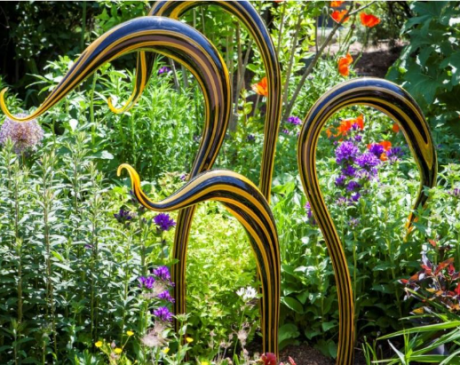
Invest in a glass garden sculpture; for nothing can profoundly affect your shade garden more than the glasses. Glasses have the maximum capacity to capture, reflect and refract light. Use glasses to reflect light on the areas which have dappled sunlight.
You can use different sculptures of glasses for this purpose. Customize the glass which complements your garden and landscape and is free from the danger of possible breakage in inclement weather. You will never regret investing in good quality glass for your shade garden but make sure to install it in the right place.
14. Artificial Lighting
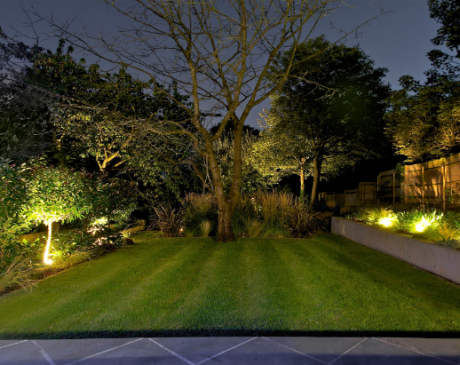
Use your eye for design skills to create focal points by hanging lights in the shade garden. Consider whether a spot should be left for sunlight or should be utilized for DIY lighting. There is a thin line between too much light and just enough light, and you will not want to spoil the vibe of your shade garden by overdoing it. Consider the appealing beauty of shadows and darkness to get the most out of lighting the garden. Animate the garden with good quality and comprehensive lighting.
15. Monochromatic Look
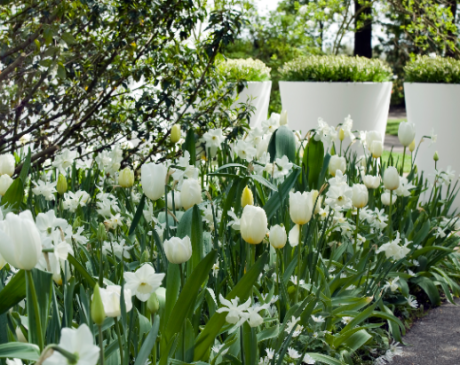
Indulge in the beauty of monochrome by planting flowers and foliage in several tints of the main hue. It gives an elite look to the shade garden as it is pleasing to the eyes. Monochromatic plants are a bit unusual but easy to plan and create a strong visual impact.
You can use shades of either white or green hue to give a serene effect to the place. You can also create a monochromatic entrance with rich textured foliage.
16. Reflect on Water
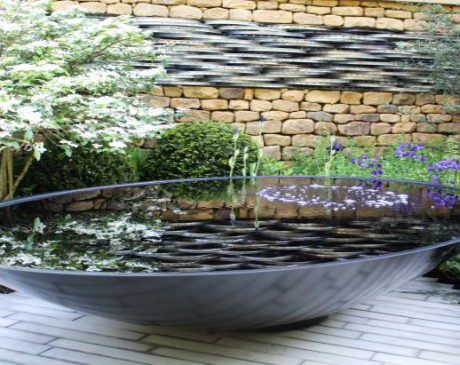
Use water features to distribute the little light that the yard receives to a larger area. A properly designed and placed water feature can become a focal point of your shade garden. Water churns, bubbles, spills, and cascades and reflects light to a bigger area, thereby spreading light to your shade garden and helping the plants to flourish. It is a great instrument for inviting light. It is advisable to consult a pond professional before installing a pond in your garden. Otherwise, you might end up having an expensive disappointment.
Conclusion
Shade gardens may occur naturally, under large trees or in the shadow of tall buildings. While these architectural elements are not under your control, featuring your shade garden with all the best possibilities is.
Microclimatic changes can occur within a small range affecting the temperature, light, soil, and air circulation. If any of your plants fail to thrive (due to the reasons mentioned), you always have the option to substitute them with new varieties.
Before setting onto the journey ahead, it is crucial to make all the crucial checks and balances associated with the available resources.
So, get rolling and roll up your sleeves before digging into the soil and planting the beautiful flowers for your shade garden, and do let us know your thoughts on how well you liked the ideas and how you are planning to proceed with the renovation project ahead.


